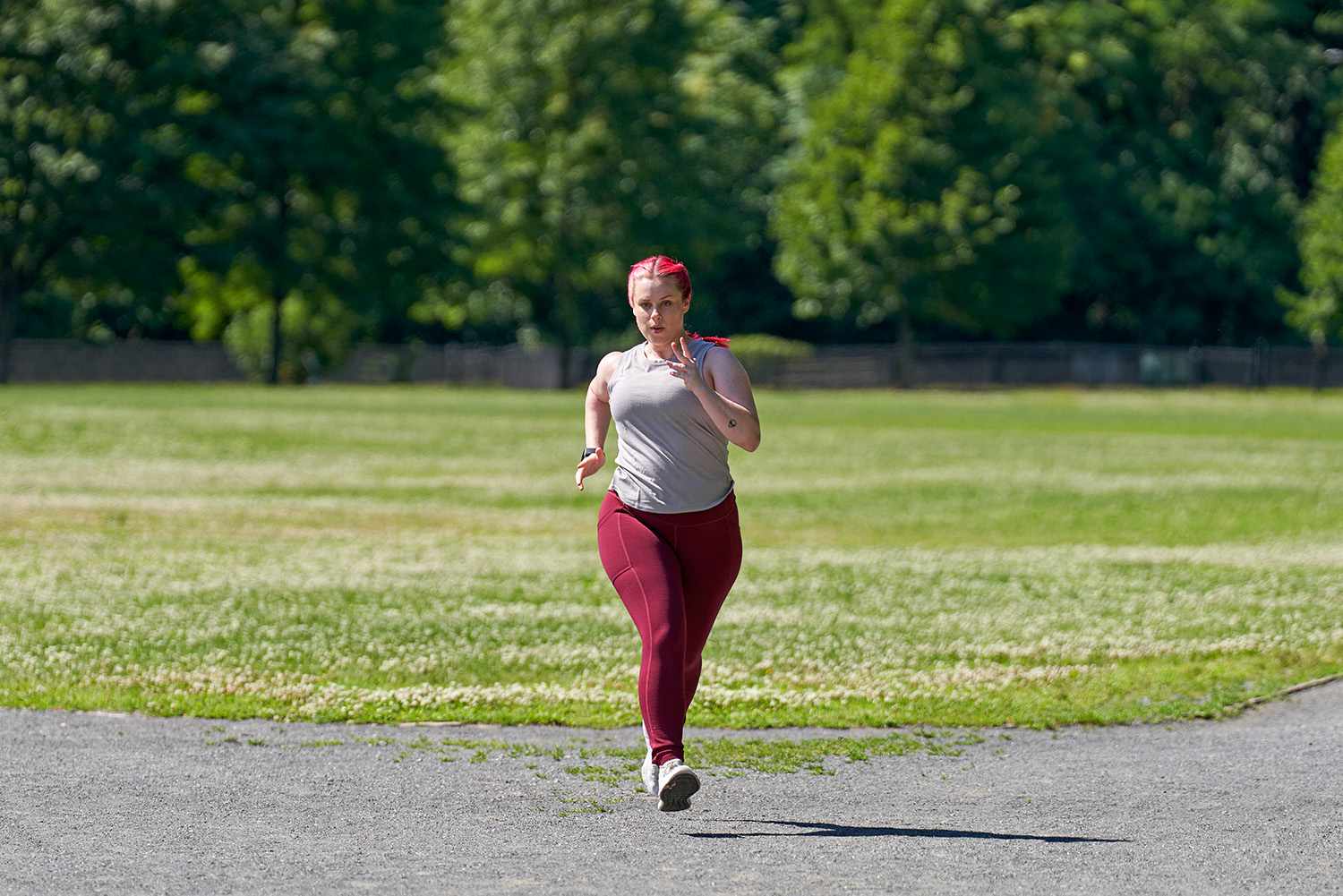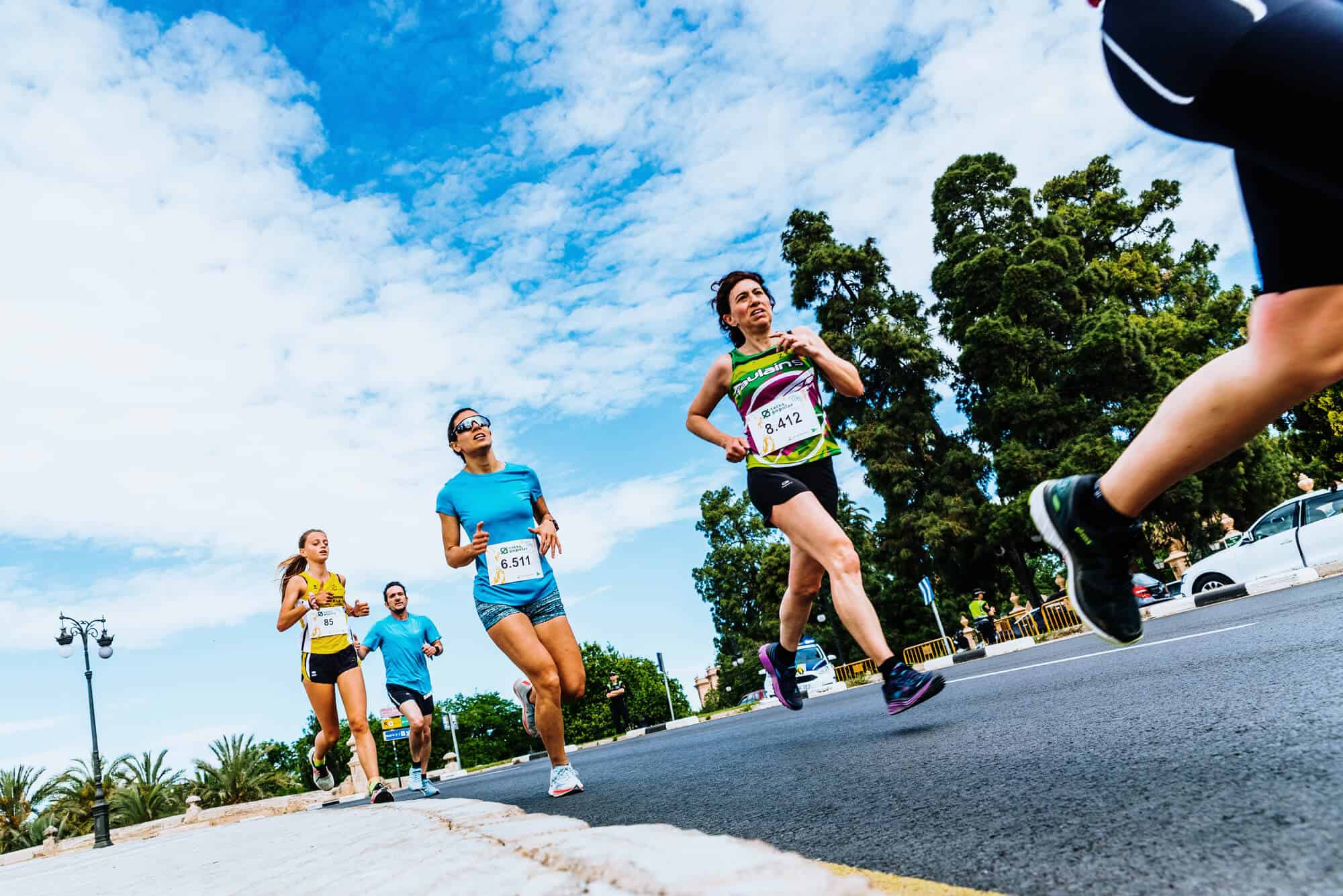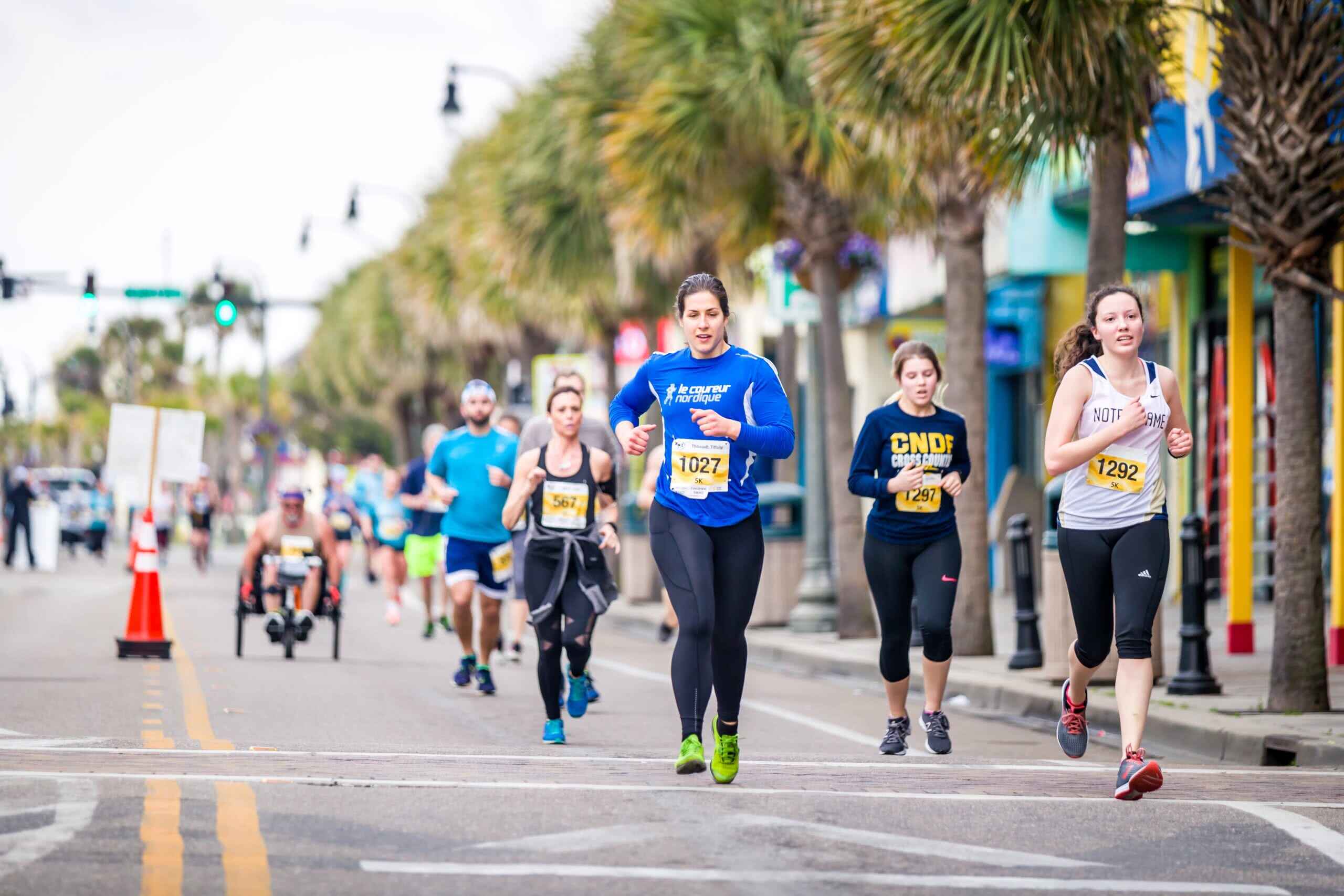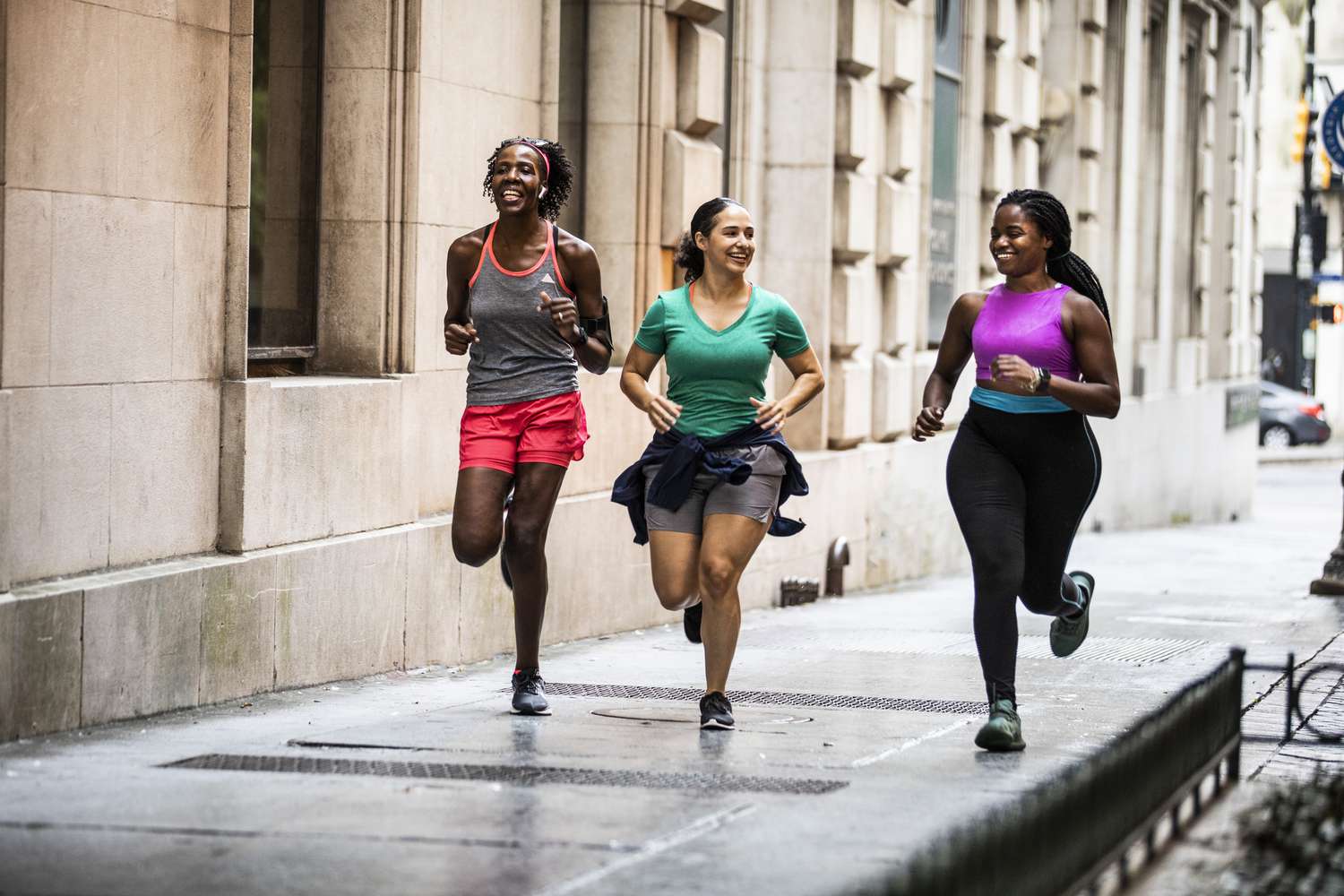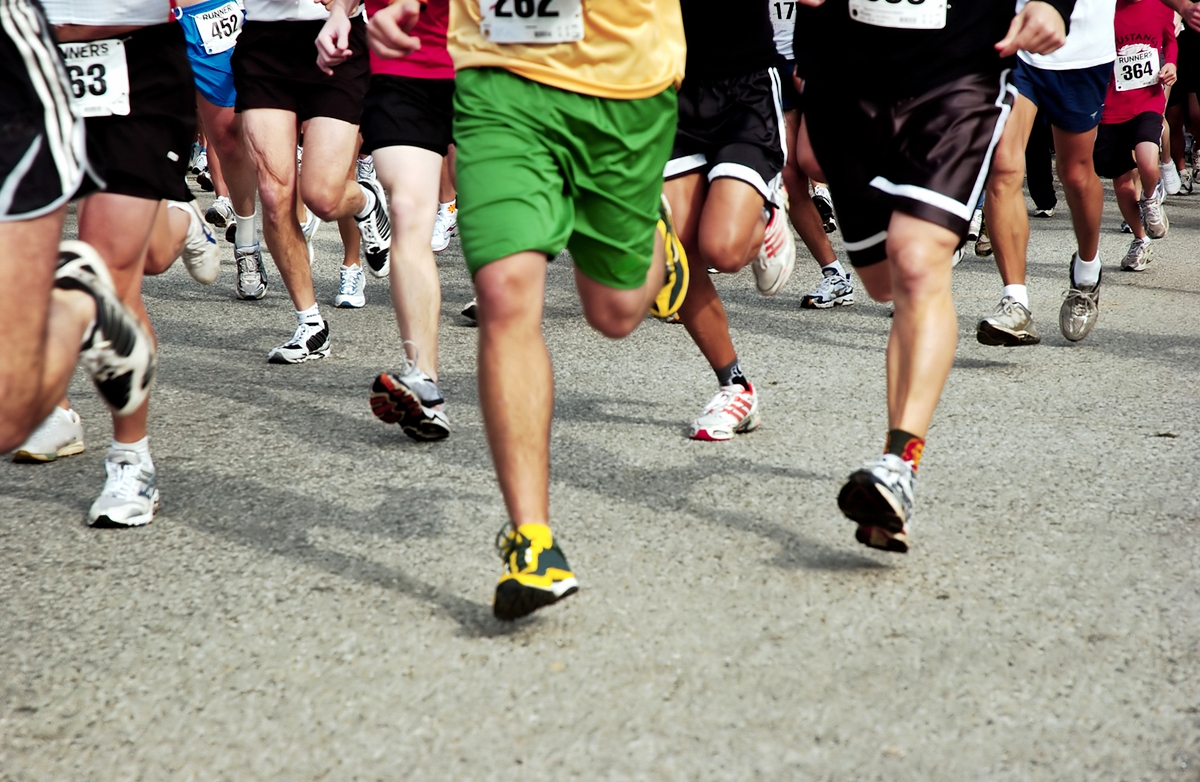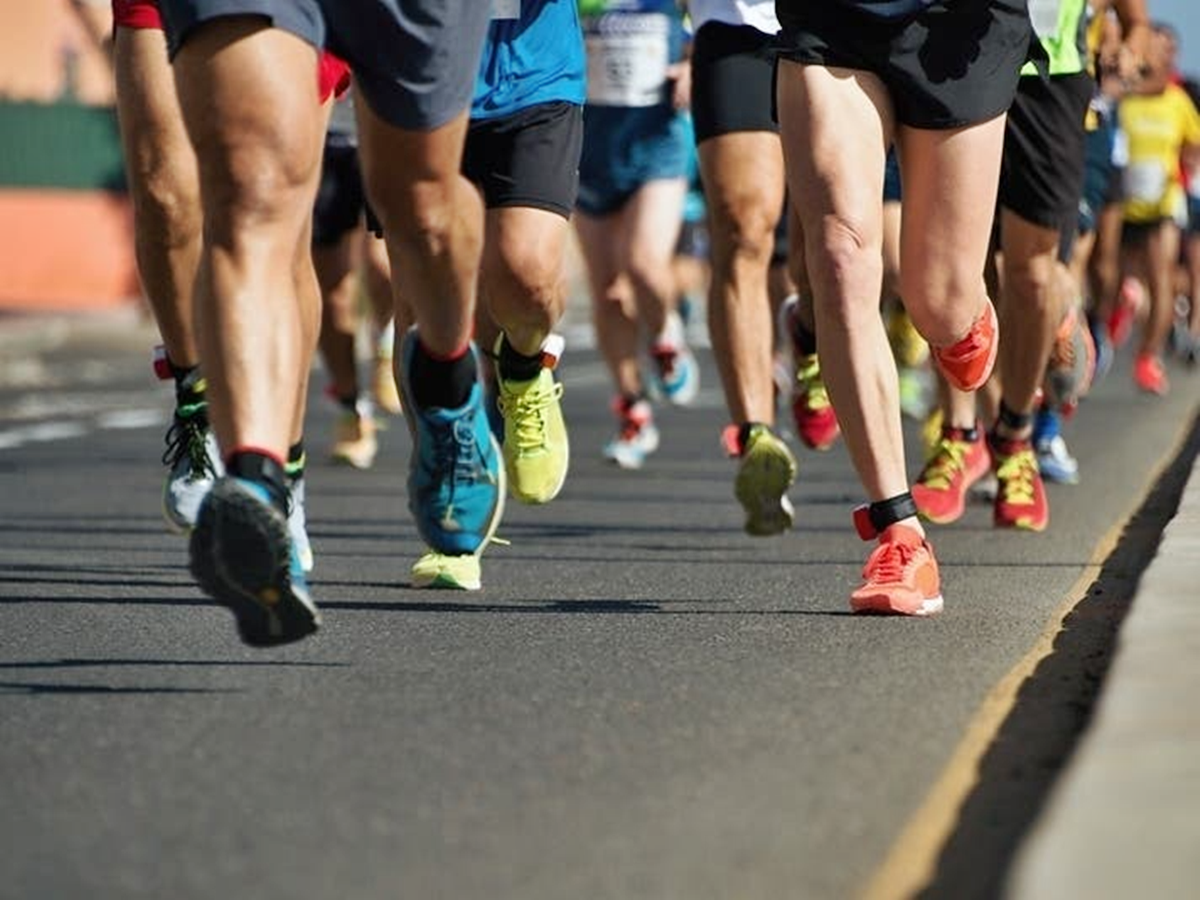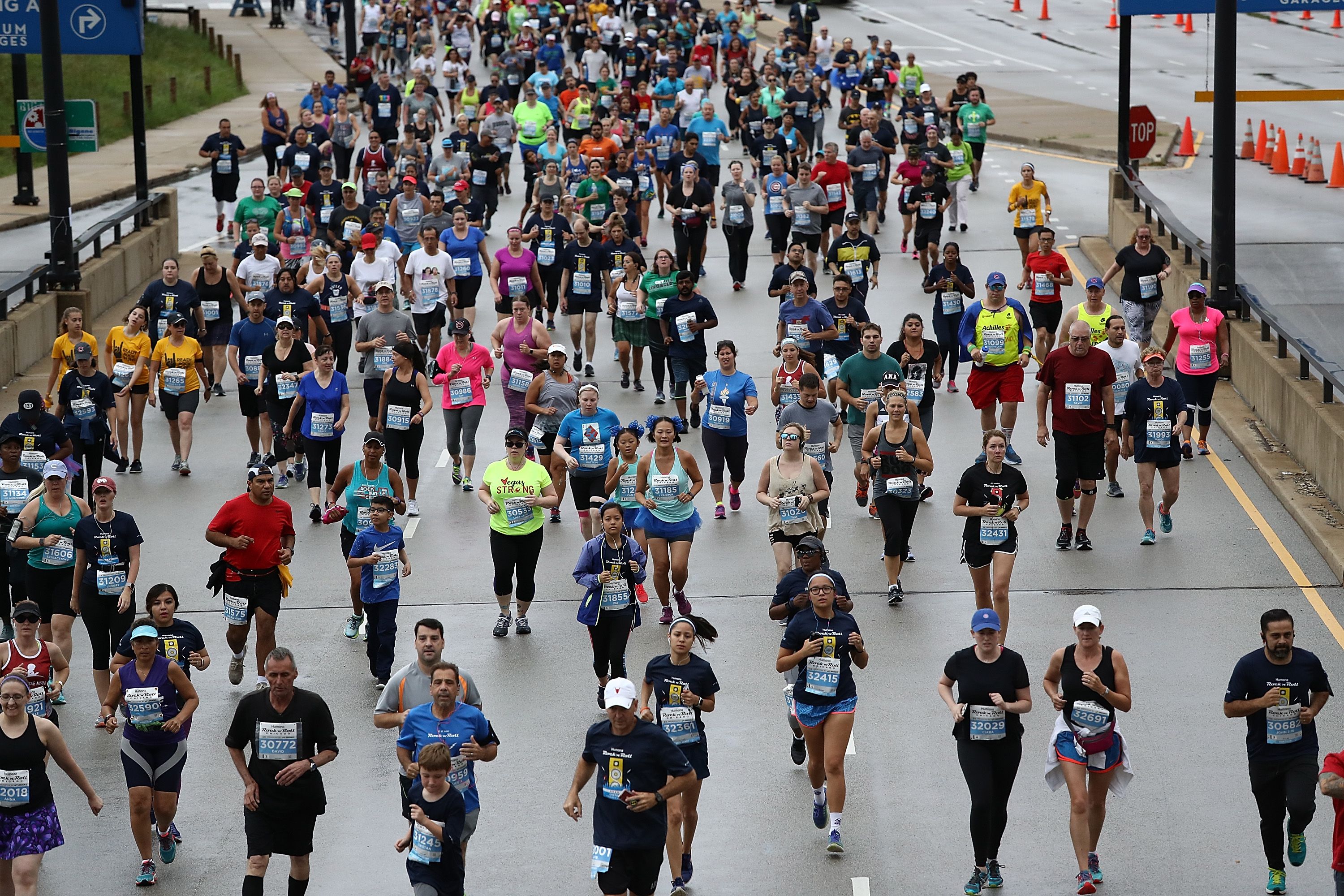

Featured
How Long Is 5K Run/Walk
Modified: January 22, 2024
Discover the optimal length of a 5K run/walk with our featured guide. Get tips, training plans, and advice to help you achieve your fitness goals.
Introduction
Welcome to the exciting world of 5K runs and walks! Whether you’re a seasoned athlete or just starting your fitness journey, participating in a 5K event can be a rewarding and exhilarating experience. But before you lace up your running shoes or hit the pavement, it’s important to understand what exactly a 5K run/walk entails and what you can expect from this popular distance.
A 5K, which stands for 5 kilometers, is a common distance for both competitive races and fun runs. It’s equivalent to approximately 3.1 miles, making it an achievable goal for people of all fitness levels. The beauty of a 5K is that it offers a perfect balance between being challenging enough to push yourself and being accessible enough for beginners.
Whether you choose to run or walk a 5K will depend on your personal fitness level and goals. Running a 5K can be a great way to improve your cardiovascular endurance, burn calories, and set new personal records. On the other hand, walking a 5K allows you to enjoy the event at a more relaxed pace, soak in the atmosphere, and focus on completing the distance rather than achieving a specific time.
No matter how you choose to participate, a 5K event is not only about the physical aspect but also about the sense of accomplishment, the camaraderie with fellow participants, and the support from cheering spectators. It’s an opportunity to challenge yourself, celebrate your progress, and contribute to a worthy cause if the event is a charity run or walk.
In this article, we will explore the average duration of a 5K run/walk, factors that can affect the duration, and provide you with some valuable tips and training plans to help you prepare for and complete a 5K event. So, whether you’re a seasoned runner looking to improve your performance or a beginner taking your first steps into the world of running, this article will provide you with the guidance you need to conquer the 5K distance.
What is a 5K Run/Walk?
A 5K run/walk is a popular distance in the world of running and fitness events. It refers to a race or recreational walk covering a distance of 5 kilometers, which is equivalent to approximately 3.1 miles. The “K” in 5K stands for kilometers, the metric unit of measurement commonly used in many countries around the world.
Typically, 5K runs/walks are organized as community events, charity fundraisers, or competitive races. They attract people from all walks of life, including beginners, enthusiasts, and seasoned runners. The inclusive nature of the 5K distance makes it accessible to people of varying fitness levels, from those who are just starting their fitness journey to experienced athletes.
One of the reasons why 5K runs/walks are so popular is that they offer a manageable challenge for participants. The distance is considered a relatively short race compared to longer distances like a marathon or half-marathon. As a result, many people find the 5K distance more approachable and achievable, allowing them to set personal goals and celebrate their accomplishments.
The atmosphere at 5K events is often festive and supportive. Participants can expect to encounter cheering spectators, music, and possibly even themed costumes or decorations, depending on the nature of the event. This creates a vibrant and motivating environment that can spur participants to push themselves and enjoy the experience.
Whether you choose to run or walk a 5K largely depends on your personal preference and fitness goals. Some participants aim to complete the distance as quickly as possible, challenging themselves to run the entire course and possibly achieve a new personal record. Others prefer to walk, taking a more leisurely approach to enjoy the event, socialize with fellow participants, and appreciate the surroundings.
Regardless of whether you run or walk, participating in a 5K can bring numerous benefits to both your physical and mental well-being. Regular exercise, such as training for and completing a 5K event, can improve cardiovascular health, boost endurance, strengthen muscles, and help manage weight. Additionally, participating in a 5K can provide a sense of accomplishment, boost self-confidence, and foster a sense of community as you join others in reaching their goals.
Average Duration of a 5K Run/Walk
The duration of a 5K run or walk can vary greatly depending on various factors such as personal fitness level, terrain, weather conditions, and individual pacing strategies. However, it’s helpful to have a general understanding of the average duration for a 5K event to set expectations and track progress.
For competitive runners, the average time to complete a 5K race can range from around 15 minutes for elite athletes to 30 minutes for experienced runners. These individuals typically train extensively to improve their speed, endurance, and overall performance. Achieving a sub-20 minute time is considered a significant milestone, while breaking the 25-minute mark is often a goal for many recreational runners.
On the other hand, participants who choose to walk a 5K can take anywhere from 45 minutes to 1 hour or more to complete the distance, depending on their walking pace. Walking a 5K allows individuals to enjoy the event at a more relaxed pace, take in the scenery, and socialize with fellow participants along the way.
It’s important to note that these times are just averages, and individual results can vary significantly. Factors such as age, fitness level, training routine, and terrain can all influence one’s pace and overall time. Additionally, beginner runners or walkers may take longer to complete their first 5K as they build endurance and improve their fitness.
Whether you’re aiming for a specific time or simply focused on completing the distance, it’s important to remember that participating in a 5K is a personal journey. The emphasis should be on setting personal goals, making progress, and enjoying the experience rather than comparing yourself to others.
As you continue to participate in more 5K events, you may find that your average duration improves with consistent training and increased fitness. This can serve as a tangible measure of progress and a source of motivation to keep challenging yourself and pushing your limits.
In the following sections, we will explore the factors that can affect the duration of a 5K run or walk and provide tips and training plans to help you reach your goals and improve your performance.
Factors that Affect the Duration of a 5K Run/Walk
Several factors can influence the duration of a 5K run or walk. Understanding these factors can help you plan and adjust your training to improve your performance and achieve your goals. Here are some key factors to consider:
- Personal Fitness Level: Your overall fitness level plays a significant role in determining your 5K duration. Individuals who have been consistently training and have a higher level of aerobic fitness will typically complete the distance faster than those who are just starting out or have a lower fitness level.
- Terrain: The type of terrain you will be running or walking on can impact your duration. A flat and smooth course will generally allow for a faster pace compared to a hilly or uneven terrain that requires more effort and slows you down.
- Weather Conditions: Extreme weather conditions, such as high heat or strong winds, can affect your performance and pace. Hot and humid weather can make it more challenging to maintain a fast pace, while strong winds can create additional resistance and slow you down.
- Pacing Strategy: Your pacing strategy during the 5K can have a significant impact on your overall duration. Starting too fast and burning out early can result in slower overall times. It’s important to find a sustainable pace and consider factors such as the course elevation and your personal fitness level when determining your strategy.
- Preparation and Training: The amount and quality of your training leading up to the event can greatly affect your performance. Consistent training that includes a combination of running or walking sessions, interval training, and strength exercises can help you build endurance and improve your speed.
- Mental Focus: Your mental attitude and focus during the 5K can impact your pace and overall performance. Positive self-talk, visualization techniques, and staying mentally engaged can help you push through challenging moments and maintain a steady pace.
It’s essential to recognize that these factors are interrelated, and addressing one can often have a positive impact on the others. By focusing on improving your fitness level, training on similar terrains as the event, and practicing different pacing strategies during training runs, you can optimize your performance and achieve your desired duration.
Keep in mind that everyone is unique, and it may take some trial and error to find the combination of factors that works best for you. Experimenting with different training methods, nutrition strategies, and mental preparation techniques can help you discover what allows you to perform at your best.
In the next section, we will provide you with tips to help you complete a 5K run or walk successfully and make the most of your experience.
Tips for Completing a 5K Run/Walk
Preparing for and completing a 5K run or walk requires a combination of physical training, mental preparation, and a positive mindset. Whether you’re a beginner or aiming to improve your performance, the following tips can help you successfully complete a 5K event:
- Set Realistic Goals: Determine your objectives for the event, whether it’s completing the distance, achieving a specific time, or simply enjoying the experience. Set goals that are challenging yet attainable for your current fitness level.
- Follow a Training Plan: Incorporate a structured training plan into your routine to gradually build your endurance and improve your fitness level. A combination of running or walking sessions, interval training, and strength exercises will help you prepare for the event.
- Listen to Your Body: Pay attention to any discomfort, pain, or fatigue during training and adjust your intensity or take rest days as needed. Pushing through minor discomfort is normal, but it’s crucial to avoid overtraining and risk injury.
- Stay Consistent: Regular training is key to building endurance and improving your performance. Make exercise a part of your routine and aim for a consistent training schedule, gradually increasing the duration and intensity of your workouts.
- Cross-Train: Incorporate activities like swimming, cycling, or strength training into your fitness routine. Cross-training helps improve overall fitness, prevents overuse injuries, and adds variety to your training.
- Practice Pacing: During training runs, practice different pacing strategies to find the one that works best for you. Start with a comfortable pace and gradually increase your speed as you progress through the distance.
- Stay Hydrated: Proper hydration is essential for optimal performance. Drink water regularly throughout the day, and especially before, during, and after your training runs or the event itself.
- Wear Appropriate Gear: Invest in a pair of well-fitting and supportive running or walking shoes to reduce the risk of discomfort and injury. Dress in lightweight, breathable clothing suitable for the weather conditions.
- Warm Up and Cool Down: Prior to your training runs and the event itself, warm up with dynamic stretches and light exercises to prepare your muscles. Afterward, cool down with gentle stretches to prevent post-exercise soreness.
- Enjoy the Experience: Embrace the atmosphere of the event, interact with other participants, and appreciate the support of the spectators. Remember that completing a 5K is an accomplishment in itself, regardless of your time.
Remember that everyone’s journey to completing a 5K is unique, and it’s important to focus on your own progress and personal goals. Stay motivated, stay positive, and celebrate every milestone along the way!
In the next section, we will provide you with training plans that can help you prepare for a 5K run or walk, whether you’re a beginner or looking to improve your performance.
Training Plans for a 5K Run/Walk
Having a structured training plan is essential for preparing yourself physically and mentally for a 5K run or walk. Whether you’re a beginner or aiming to improve your performance, the following training plans can guide you towards successfully completing a 5K event:
- Beginner’s Plan: This plan is designed for individuals who are new to running or walking and want to build up their endurance gradually. Start with a combination of walking and jogging intervals. Begin with a ratio of 1 minute of jogging and 4 minutes of walking and gradually increase the jogging intervals while decreasing the walking intervals. Aim for at least three training sessions per week, gradually increasing the duration and intensity of your workouts over time.
- Intermediate Plan: This plan is suitable for individuals who have some running or walking experience and want to improve their performance. Incorporate a mix of running and walking intervals into your training sessions. Start with a ratio of 3 minutes of running and 2 minutes of walking, gradually increasing the running intervals while decreasing the walking intervals. Aim for three to four training sessions per week with a combination of shorter, faster runs and longer, slower runs to build endurance.
- Advanced Plan: This plan is for experienced runners or walkers who want to challenge themselves and achieve a faster time. Focus on building endurance and increasing your speed and intensity. Incorporate interval training, hill workouts, and tempo runs into your training routine. Aim for four to five training sessions per week, including shorter, intense speed workouts, longer steady-state runs, and recovery runs to allow your body to rest and recover.
Remember to listen to your body, gradually increase the intensity of your workouts, and include rest days in your training plan to prevent overuse injuries. It’s important to tailor the training plan to suit your own fitness level and abilities.
Additionally, be sure to include cross-training activities such as swimming, cycling, or strength training to improve overall fitness and prevent muscle imbalances. These activities can help you build strength and endurance while reducing the risk of injury.
As you progress through your training plan, monitor your progress, track your times, and make adjustments as needed. Celebrate your achievements along the way, whether it’s completing longer distances, achieving new personal records, or simply improving your overall fitness and endurance.
By following a well-structured training plan, staying consistent, and maintaining a positive mindset, you’ll be well-prepared to complete your 5K run or walk with confidence and enjoyment.
Now that you have the necessary knowledge and plans, it’s time to lace up your shoes and start training for your next 5K event!
Conclusion
Participating in a 5K run or walk can be a rewarding and exhilarating experience for individuals of all fitness levels. Whether you’re aiming for a personal best time or simply looking to complete the distance, the journey towards a 5K event is filled with excitement, personal growth, and a sense of achievement.
In this article, we have explored what exactly a 5K run/walk entails and the average duration for completing the distance. We have also discussed the various factors that can influence your 5K duration, including your personal fitness level, terrain, weather conditions, pacing strategy, preparation, and mental focus.
To help you successfully complete a 5K event, we have provided valuable tips, including setting realistic goals, following training plans tailored to your fitness level, listening to your body, staying consistent, cross-training, and staying hydrated. These tips will help you make the most of your training and ensure a pleasant and rewarding experience at the event itself.
Remember, participating in a 5K is a personal journey. Embrace the challenges, celebrate your progress, and enjoy the sense of community and accomplishment that comes with completing a 5K event. Whether you’re a beginner or an experienced runner or walker, focus on your own goals and journey, and don’t compare yourself to others.
So, whether you’re lacing up your running shoes or preparing for a leisurely walk, let the adrenaline and determination drive you forward. Train hard, stay focused, and most importantly, have fun along the way!
Now it’s time to start your training, set your goals, and conquer that 5K distance. Best of luck on your journey to completing your next 5K run or walk!
